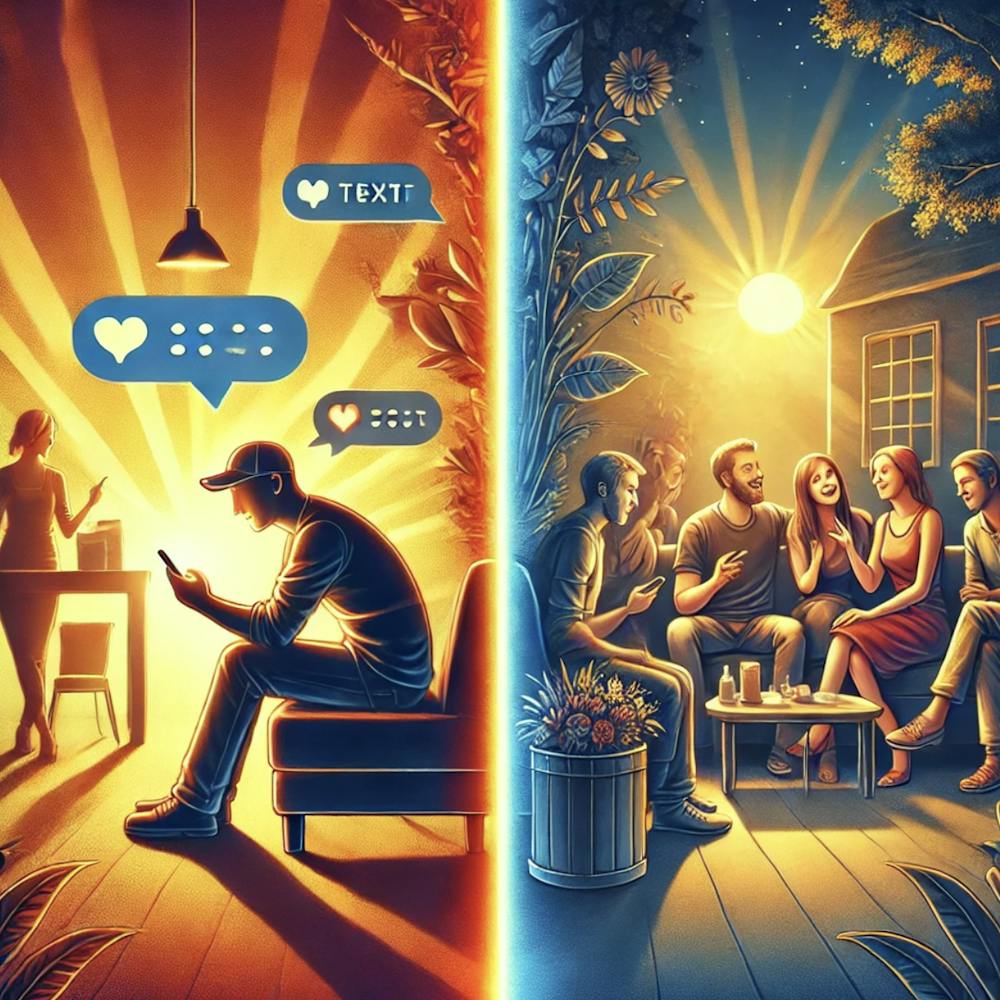How many times have you found yourself tapping the screen of your phone to send out a message instead of picking up the phone and dialing a number? Maybe frequently or maybe all the time, because today, the world see’s texting as the social norm.
Over the last few decades, texting has become the main source of communication for teens. From waking up each morning and checking our phones to sending that last good night message, texting has become a big deal in our daily lives. In recent years, this trend has begun to overshadow face-to-face conversations, changing how we connect with others.
According to a 2018 survey by Common Sense, 35% of teens choose texting as their platform for communicating with people, while 16% use social media to stay in touch with the outside world. Out of the 1, 141 teenagers interviewed, only one third of them prefer the rather old school method of face to face chit chatting. This change has not only been persistent in teens but a general pattern seen all over the U.S. The U.S. Bureau of Labor Statistics further underscores this shift, reporting that Americans spend just 39 minutes a day in face-to-face conversation—a small fraction of their waking hours.
What is the problem with communicating over text, social media, or email? Some experts believe that technology may create an “illusion of connection”, but in reality, it leaves us more and more lonely and distant from the people around us. The growth in popularity of texting over talking has led to teens and young adults losing their skills of human interactions, dehumanizing conversations done over the phone or messaging. Important things like eye contact, gestures, tone and emotion are lost when we share things over a screen because one cannot interpret the true meaning of words at times. Oftentimes, messages can lead to the receiver being hurt or misunderstood because the response form the other party was not clear and could be understood in various ways. A discussion that takes place without seeing the other person can lead to a weakened understanding of the situation, causing fallouts and a divergence between people. Texting important things may often be missed because of the high number of texts a person receives each day, around 50-60, leaving the message floating around in the cloud on someone’s phone.
But with the problems also comes the benefits of texting over talking. Texting has proven to be a reliable and a quick way to pass on information. Amongst adolescents, finding time in their busy schedules to have a proper sit down conversation with someone is rather difficult and time consuming. Messaging allows them to send a text almost instantly without wasting any time in formalities and getting right to the point.
According to the 2023 Pew Research center survey, about 95% of teenagers today have access to a smartphone, so a rapid text message is no problem to them. Texting also allows teenagers to have a sense of privacy, knowing that no one, other than the responder may look at their messages, having a platform to share details they otherwise might not, due to embarrassment in a face to face conversation with peers or friends. This privacy gives teens a chance to foster close knit relations with people, get to know the kind of people around them and open their feelings to people without having the pressure of being judged. At times texting can also save lives and help those in trouble. With the many Crisis Lines now available, people can reach out for help without feeling like they are being judged by texting a number and getting help almost instantly.
Texting and messaging have been called out to the excessive screen time use by many, this quick and easy platform helps people stay connected in today’s ever changing and bustling world. Texting has changed our lives in a lot of ways and holds an important position in our modern society, but a traditional face to face conversation makes a different impact than what texting can ever do. In my opinion, a balance between texting and face to face interactions is a key point to have true, understanding and clear conversations. This balance will allow one to enforce a strong and healthy connection with people while also having the flexibility and convenience of online communication for effective and meaningful interactions.




